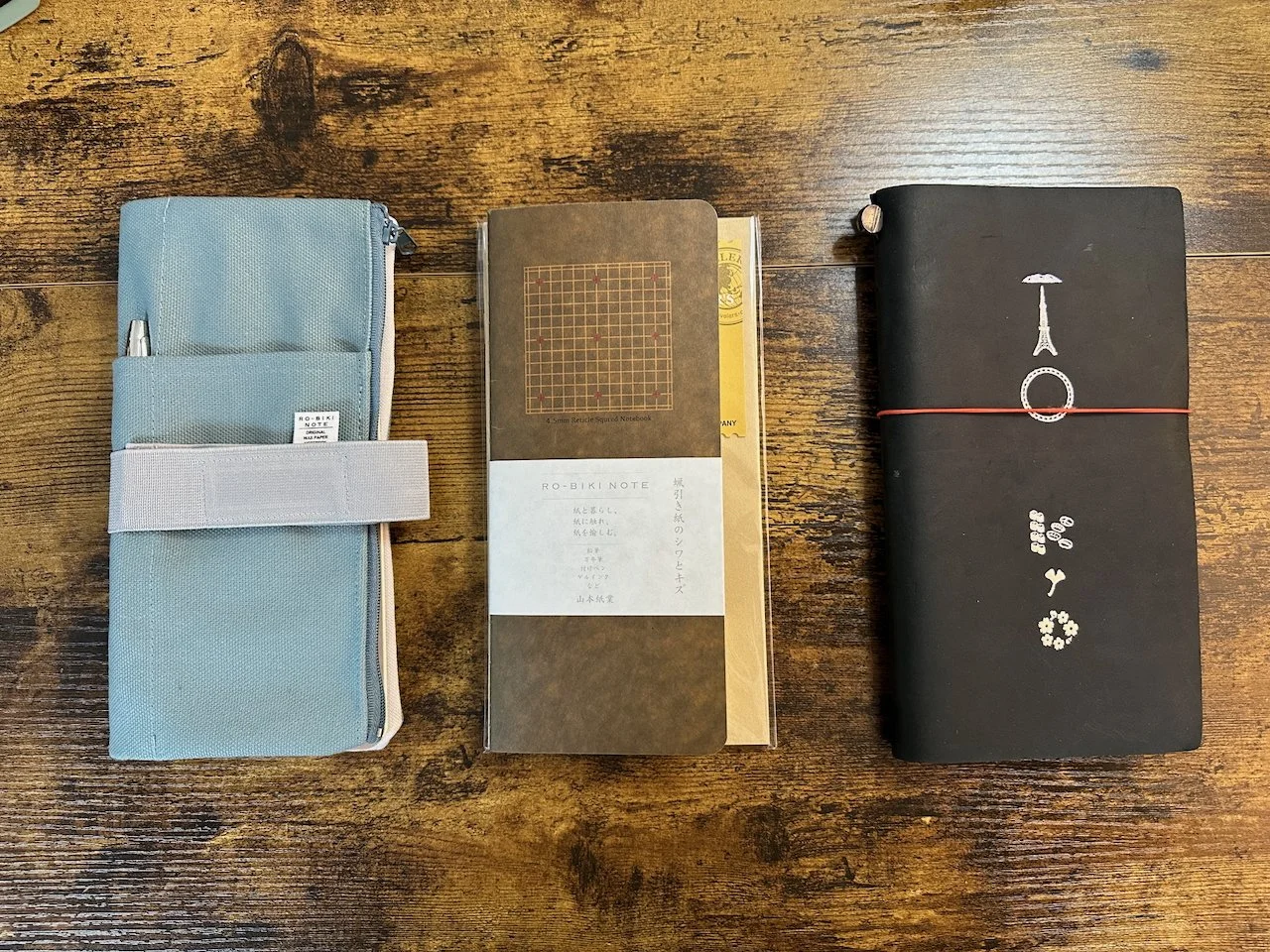Over the weekend I updated the long-running post “Hierarchies of Fountain Pen Friendly Paper” to reflect new products on the market and changes in availability of certain papers that I consider “fountain pen friendly”. I don’t believe that I’ve ever written a designated post discussing my personal favorites from that list, so here goes!
How I Use Paper and How It Affects My Preferences
Because this post addresses my own personal preferences, I should probably talk about what those are first. For my personal writing, I enjoy using more textured, relatively absorbent paper with a softer writing feel. My primary considerations are (relatively) quick dry times and the ability to write on both sides of the page. Because I use a lot of planners and ring or disc notebooks, I also value perforated pages, or at a minimum, paper that comes in tear-off pads or looseleaf sheets that can be hole-punched or cut down to different sizes. What don’t I pay a lot of attention to (at least beyond the basics)? The nuances of ink color and shading/sheen/shimmer, since most of my writing is more functional and not retained long-term, and also because I think Midori MD Cotton - my favorite - does a more than adequate job with ink. Three of the papers on this list are long-timers (both Midoris and the Tomoe River 68gsm), and two are recent additions (Soliste and Maruman Basic).
Midori MD Cotton. My all-time favorite writing paper, even if it mostly comes in blank, unruled notebooks and writing pads. Midori MD Cotton strikes an excellent balance between absorbency and ink-friendliness, will dry relatively quickly without feathering or bleeding, and for those who do value color reproduction, actually does a pretty nice job of showcasing inks. I was sad to hear at this year’s San Francisco Pen Show that Plotter is not going to continue to make the A5 and Bible-sized refills featuring the MD Cotton Paper with letterpress ruling, which is what is shown in the pictures here.
Yamamoto Soliste. A relatively new paper that Yamamoto has popularized, the off-white Soliste is uncoated and textured, yet not quite as absorbent as MD Cotton Paper. I find that it has a soft feel, which is especially noticeable when used in notebooks like the Yamamoto Ro-Biki system. If you enjoy the feel of papers like Iroful or Cosmo Air Light, but desire something slightly less “spongy” (for lack of a better term) consider giving Soliste a try.
68gsm Tomoe River Paper. Each year, as we watch the “classic” 52gsm Tomoe River Paper undergo production changes and reformulations, I worry about the 68gsm version, which is my favorite of the two. Slightly heavier, and in my opinion, more textured with better dry-times and performance for everyday writing, this is my favorite paper to use in A5-Slim/Traveler’s-size notebooks ever since Lochby introduced its own “Voyager” refill. Currently, third-party companies Lochby and Odyssey notebooks are the only ones who I know who are using the 68gsm version in large quantities, and I worry that eventually it will run out since I don’t believe it is being produced any longer. Hopefully I’m wrong.
Midori MD Paper. I would also include Plotter paper under this header. While standard Plotter paper is marketed as a different product and has a different formulation, it comes from the same product family and for my purposes behaves similarly. I love Midori paper for the variety of layouts, ranging from blank or grid pads to dot grid colored paper to memo blocks to letter pads.
Maruman Basic (70 gsm). I was late to the party on this one, but I was happy to discover this cost-effective fountain pen friendly paper that I enjoy using for work. Slightly lighter weight than Maruman Mnemosyne, I don’t see much of a drop off in performance, and the sturdy spiral binding and chipboard cover has held up well in my bags. Also: perforated pages! I can’t emphasize how nice that is!
I wish Midori would expand its use of the cotton paper, like the limited edition Plotter refill shown here. MD Cotton is my personal ink swatching paper of choice, even if some would argue that it darkens the colors.
If I’m drawing or playing around with ink purely for personal enjoyment, there’s a 90+% chance I’m using Midori MD Cotton. For notetaking and everyday work, however, I will probably be using the Maruman Basic Spiral Notebooks or some version of Midori MD Paper (including the various Plotter refills). These papers strike a good balance between performance and cost-effectiveness, and come in a wide range of different rulings and formats.
If I had one recommendation to those looking for that “perfect” paper: test as many different papers as you can. Paper is still relatively inexpensive, so it’s easy to buy a handful of different notebooks and samples to dial in your preferences once you have a general idea of your overall needs and what you think you like. Pen clubs and shows are often great places to test out different papers, as people are usually willing to share. Finally, we keep samples and testers of most papers available in our shop, so if there is something you’d like to see or write on, I will often be able to go get it for you. It gives you a reason to come see us!
Our brick and mortar store is open this week from 1-6pm Thursday and Friday, and from 10am-6pm on Saturday. You can of course always shop with us online, 24-7!
Maruman Basics Dot Grid Paper: An everyday workhorse.
